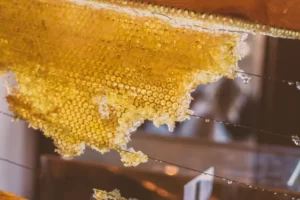Table of Contents
Introduction
In recent years, there has been growing interest in the use of manuka honey for surgical wounds. Manuka honey is a unique type of honey that is produced in New Zealand by bees that pollinate the manuka bush. It has long been recognized for its antibacterial properties and has been used for centuries as a natural remedy for various ailments.
In this article, we will explore the potential benefits of using manuka honey for surgical wounds. We will discuss its antimicrobial properties, its ability to promote wound healing, and its potential to reduce the risk of infection. Additionally, we will examine the various ways in which manuka honey can be used to treat surgical wounds, including topical application and wound dressings.
The Antibacterial Properties of Manuka Honey
Manuka honey is renowned for its potent antibacterial properties. It contains a compound called methylglyoxal (MGO) which is responsible for its antimicrobial activity. MGO is found in higher concentrations in manuka honey compared to other types of honey, making it particularly effective at fighting off bacteria.
Several studies have demonstrated the effectiveness of manuka honey in killing a wide range of bacteria, including antibiotic-resistant strains such as methicillin-resistant Staphylococcus aureus (MRSA). This makes it an ideal treatment option for surgical wounds, which are at a high risk of infection.
The Role of Manuka Honey in Promoting Wound Healing
In addition to its antibacterial properties, manuka honey has also been found to promote wound healing. It is believed to do so through several mechanisms. First, it creates a moist environment that is conducive to healing. This helps to prevent the wound from becoming dry and crusty, allowing new tissue to form more quickly.
Second, manuka honey stimulates the production of growth factors and cytokines, which are key regulators of the wound healing process. These molecules help to recruit immune cells to the site of the wound and promote the formation of new blood vessels.
Lastly, manuka honey has been found to have anti-inflammatory properties. Inflammation is a natural response to injury, but excessive or prolonged inflammation can delay the healing process. By reducing inflammation, manuka honey helps to accelerate wound healing.
How to Use Manuka Honey for Surgical Wounds
There are several ways in which manuka honey can be used to treat surgical wounds. The most common method is through topical application. Manuka honey can be directly applied to the wound, either by itself or in combination with other wound healing agents such as saline or hydrogels.
Alternatively, manuka honey can be used as a component of wound dressings. These dressings are typically made of a non-adherent material that is impregnated with manuka honey. The dressing is applied to the wound and left in place for a certain period of time, usually 24 to 48 hours, before being changed.
Using Manuka Honey as a Topical Treatment for Surgical Wounds
When using manuka honey as a topical treatment for surgical wounds, it is important to ensure that the honey is of high quality. Look for honey that has been tested for its antibacterial activity and contains a high concentration of MGO. The honey should also be sterile to minimize the risk of introducing additional bacteria to the wound.
To apply the honey, first, clean the wound with saline solution or another appropriate wound cleanser. Then, use a clean sterile swab to apply a thin layer of honey to the wound surface. Cover the wound with a sterile dressing to prevent the honey from being wiped off.
Using Manuka Honey in Wound Dressings
When using manuka honey in wound dressings, it is important to choose a dressing that is appropriate for the type and severity of the wound. There are a wide variety of manuka honey dressings available on the market, ranging from simple gauze dressings to more advanced dressings that incorporate hydrogels or other wound healing agents.
To use a manuka honey dressing, first, clean the wound with saline solution or another appropriate wound cleanser. Then, carefully apply the dressing to the wound, ensuring that the honey comes into direct contact with the wound surface. Secure the dressing in place with a bandage or adhesive tape.
Precautions and Considerations
While manuka honey is generally safe to use, there are a few precautions and considerations to keep in mind. First, some people may be allergic to honey. If you have a known allergy to honey, it is best to avoid using manuka honey for surgical wounds.
Second, manuka honey should not be used on wounds that are bleeding heavily or have deep tissue involvement. In these cases, it is important to seek medical attention and follow the advice of a healthcare professional.
Lastly, it is important to note that manuka honey is not a substitute for medical treatment. While it can be a valuable adjunctive therapy for surgical wounds, it should not replace standard wound care practices such as proper cleansing, debridement, and the use of appropriate dressings.
Conclusion
In conclusion, manuka honey has emerged as a promising treatment option for surgical wounds. Its potent antibacterial properties and ability to promote wound healing make it an ideal choice for preventing infection and accelerating the healing process.
When using manuka honey for surgical wounds, it is important to ensure that the honey is of high quality and sterile. It can be applied topically or used in wound dressings, depending on the severity and type of the wound.
However, it is important to remember that manuka honey is not a cure-all and should be used as part of a comprehensive wound care regimen. It is always best to consult with a healthcare professional for proper wound management.
For more information on manuka honey and its uses, please visit https://aboutmanukahoney.com.



